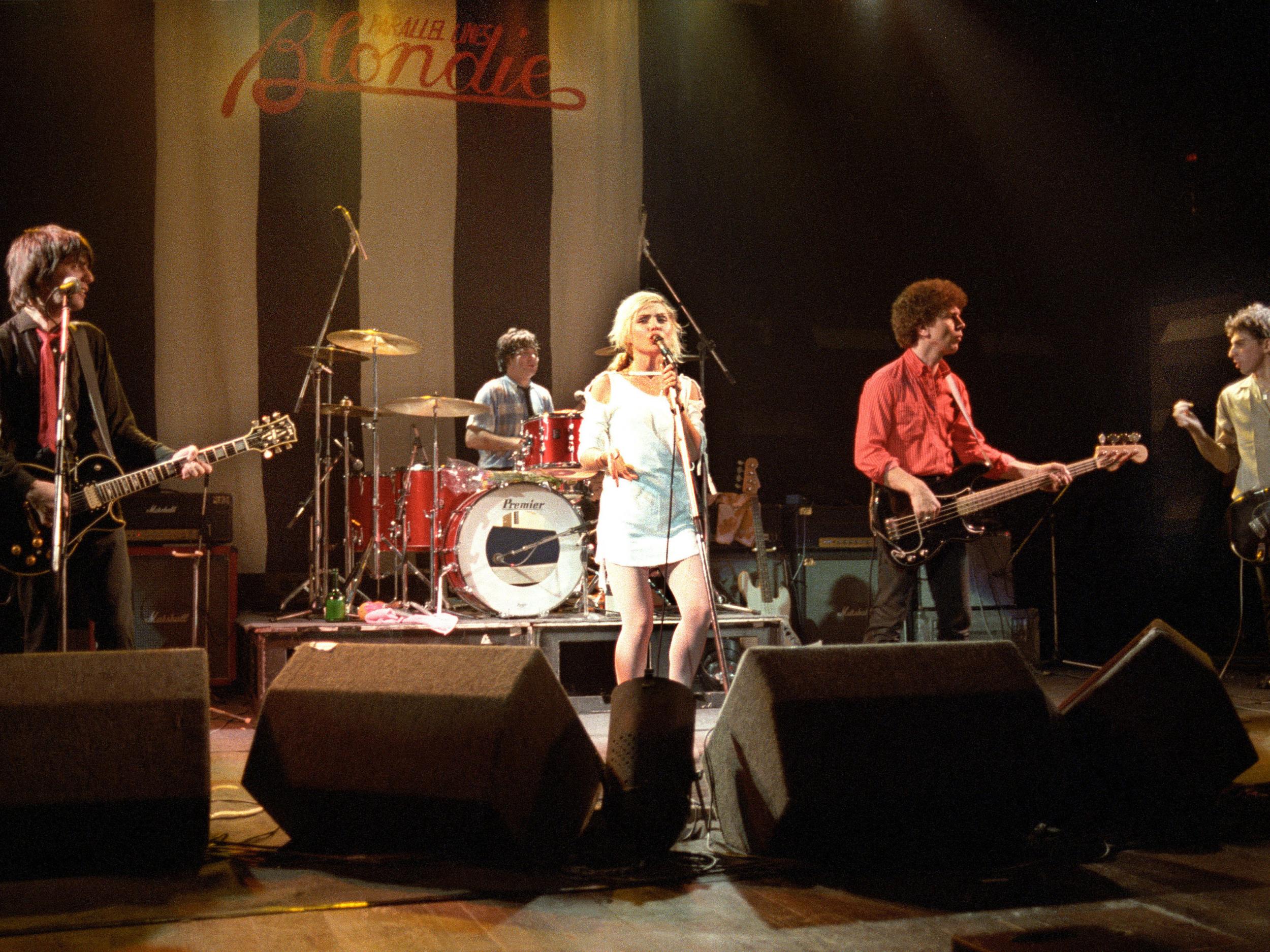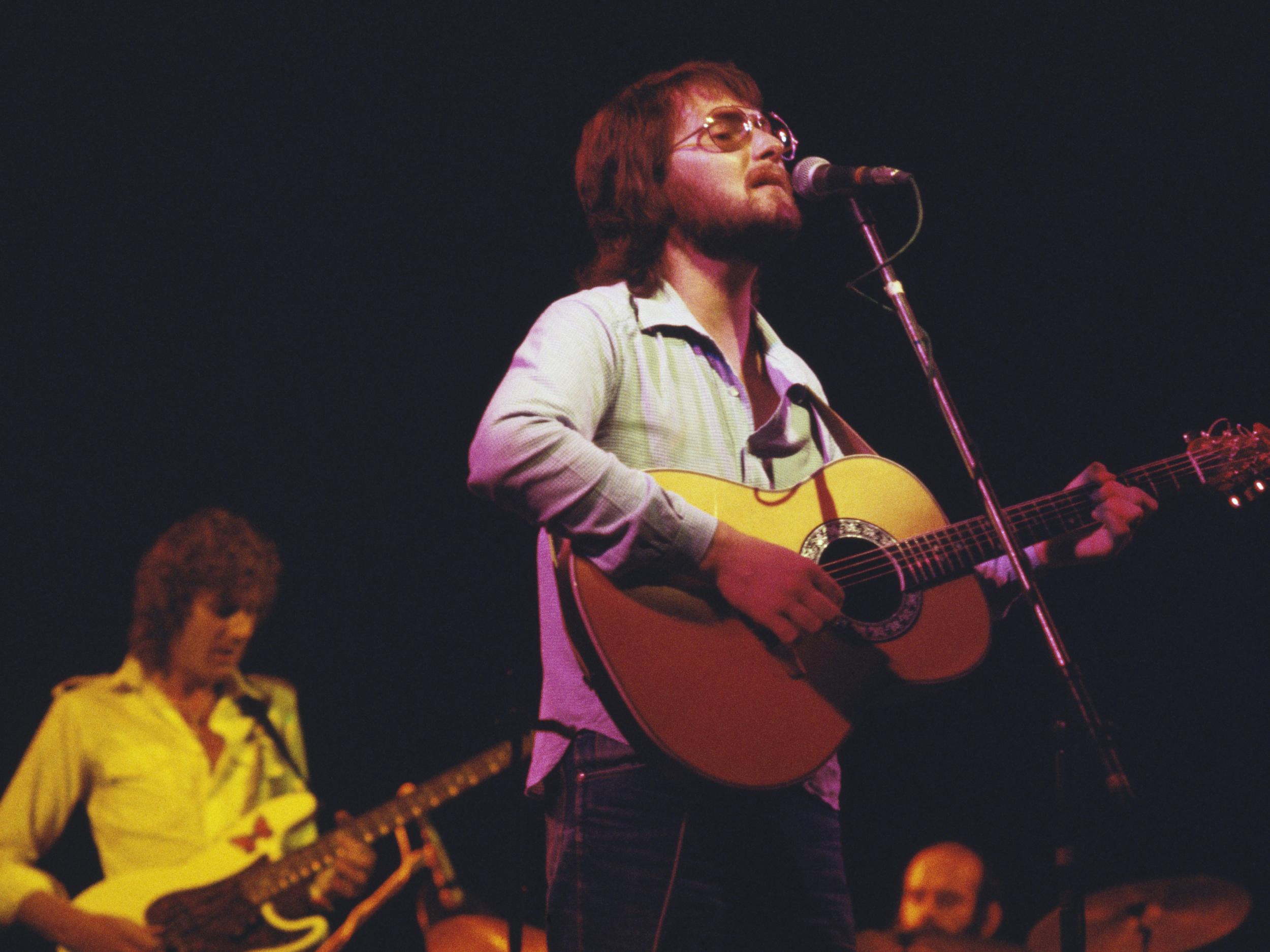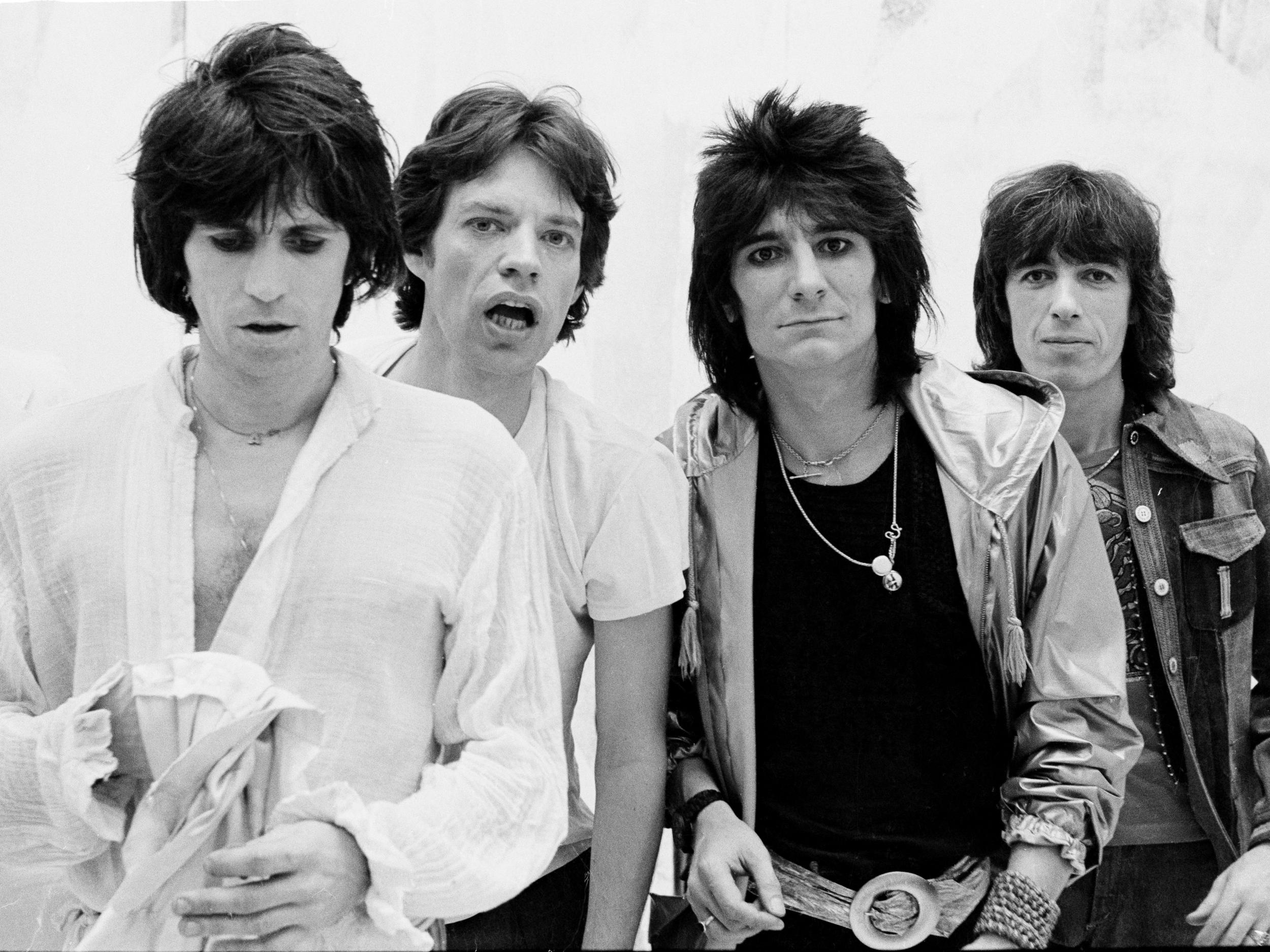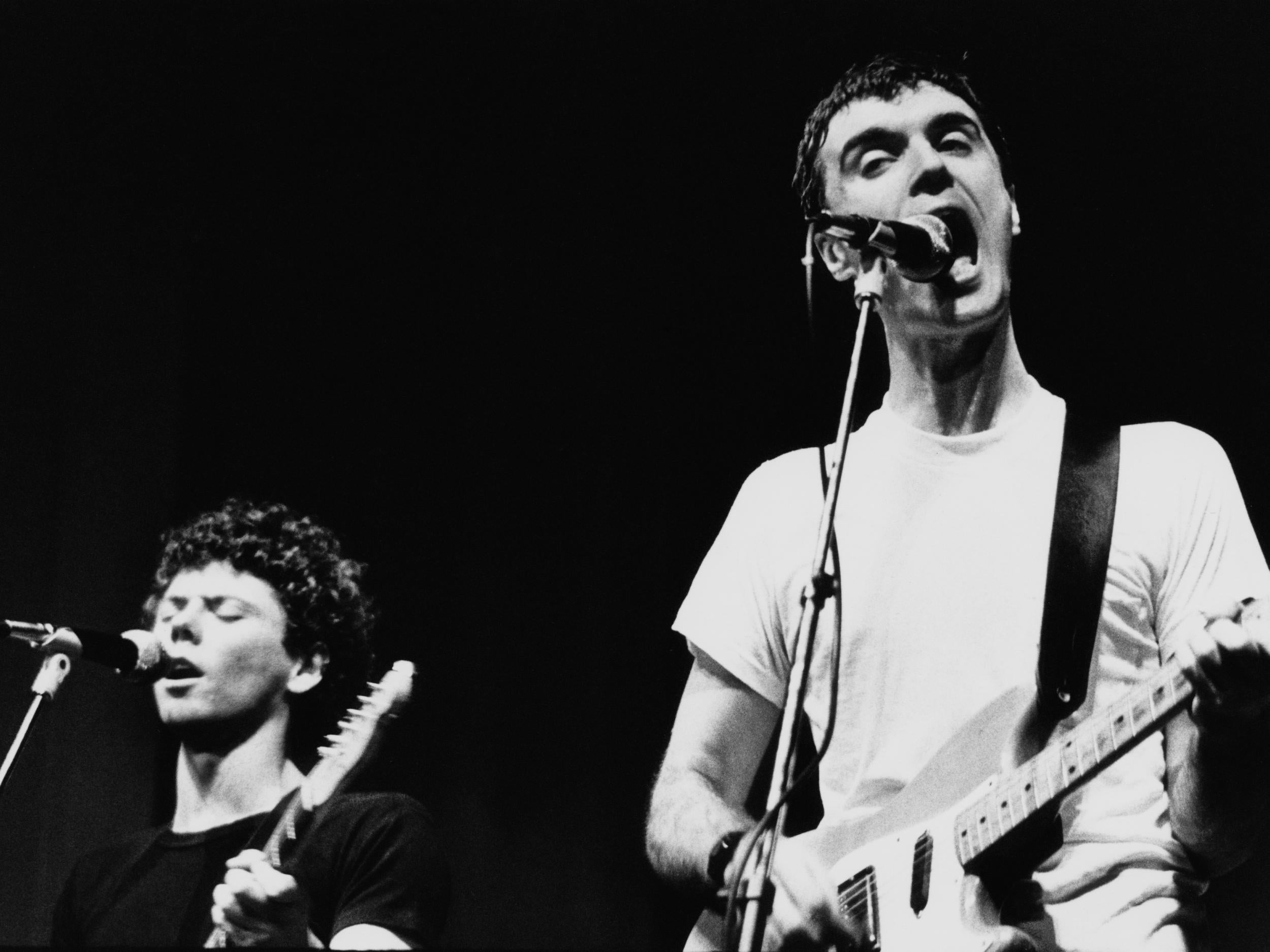Playlist: The 20 best albums from 1978
Has there ever been a more eclectic nay, schizophrenic year for popular music than 1978? Punk’s year zero of 1977 was supposed to clear out the deadwood and bloated excesses of a stagnant music scene but it didn’t quite work out like that. Graeme Ross compiles a list of favourites

A close inspection of the albums and singles charts of 1978 shows that punk, post punk and new wave coexisted smoothly with heavy metal, soft rock, pristine pop, disco fever, soul balladry and prog rock with liberal doses of reggae and funk thrown in for good measure.
Some of the classic rock acts of the Sixties and Seventies were bewildered by the seismic changes in the industry, while others like the Stones rose to the occasion.
The two best-selling albums of the year were movie soundtracks – Saturday Night Fever and Grease.
It all made for some unlikely bedfellows but also some fantastic music in a year of more than 100 million record sales in the UK.
Here are just 20 of the best albums of 1978, reflecting the diverse array of genres available to record buyers in that heady year.
20 Nick Lowe – Jesus of Cool
The multi-talented Lowe’s breakthrough album features a host of polished yet rootsy gems from the former pub-rocker who had played a key role as a producer in the early days of the UK punk scene. Outstanding songs such as “Little Hitler”, “So It Goes” and the hit single “I Love the Sound of Breaking Glass” demonstrate this musical chameleon’s gift for wry, tongue-in-cheek wordplay on an album that could have been even better if Lowe had included great songs like “American Squirm” and “What’s So Funny ‘Bout Peace Love and Understanding”.
19 The Cars – The Cars
They are perhaps best known for “Drive” the song that would forever be linked with the heartbreaking images from Live Aid, but the Boston combo’s debut album, a winning blend of new wave attitude and classic American rock, which was recorded in just 12 days, was all over the airwaves in 1978. Key to the album’s strength was front man Ric Ocasek’s gift for writing catchy hooks by the bucket load as exemplified on radio friendly staples such as “My Best Friend’s Girl”, “Good Times Roll” and “Just What I Needed”, which helped this irresistible record shift more than six million copies.
18 Television – Adventure
Television emerged from the New York CBGB scene in 1977 with one of the great guitar albums, Marquee Moon. Adventure, the difficult second album, suffered in comparison to that epochal debut and is only now gaining the plaudits it has long deserved. There’s a slight softening of Marquee Moon’s art-school sound on Adventure, but the qualities that made Television stand out from most of their new wave contemporaries – the brittle yet fluid guitar interplay between Tom Verlaine and Richard Lloyd, Verlaine’s nasally whine and sometimes inscrutable lyrics remain.
There’s no 10-minute epics a la Marquee Moon, but the weeping beauty of “The Fire” and “The Dream’s Dream” wouldn’t have been out of place on their debut. The strident “Foxhole” continued Television’s unlikely UK hit singles run, but “Ain’t That Nothin”’ which was probably their best 45, didn’t, and Television broke up soon after Adventure was released.

17 Kate Bush – The Kick Inside
The remarkable debut album containing “Wuthering Heights”, the one-of-a-kind single that catapulted Bush into the limelight still impresses in its scope and ambition. Wildly romantic, sensual and brimming with lyrical imagery, The Kick Inside drew from Bush’s stockpile of songs she had been writing since she was 13 years old. The incredibly worldly “The Man with the Child in His Eyes” dates from that period and even at this embryonic stage, Bush wasn’t afraid to tackle taboo subjects such as incest (the title track) while exploring her own sexual awakening on “Feel It”. The Kick Inside launched an extraordinary career for this uniquely talented auteur and she wasn’t yet 20 years of age.
Enjoy unlimited access to 100 million ad-free songs and podcasts with Amazon Music
Sign up now for a 30-day free trial. Terms apply.
ADVERTISEMENT. If you sign up to this service we will earn commission. This revenue helps to fund journalism across The Independent.
Enjoy unlimited access to 100 million ad-free songs and podcasts with Amazon Music
Sign up now for a 30-day free trial. Terms apply.
ADVERTISEMENT. If you sign up to this service we will earn commission. This revenue helps to fund journalism across The Independent.
16 Jeff Wayne – Jeff Wayne’s Musical Version of The War of the Worlds
It’s prog rock, Jim, but not as we know it. This grandiose orchestral version of HG Wells’s famous novel was greatly enhanced by the authoritative tones of Richard Burton and featured contributions from Phil Lynott, Julie Covington and David Essex. Justin Hayward also had a top five single in the UK with “Forever Autumn” and the original concept has spawned a franchise consisting of dvds, video games, and live tours around the world as well as myriad versions of the original double album. A guilty pleasure if ever there was one.
15 Chic – C’est Chic
For music snobs, Chic were the acceptable face of disco. For those who knew better, the Chic production team of Nile Rodgers and Bernard Edwards were musical geniuses whose talents would influence popular music for the next 30 years. C’est Chic kicks off with “Le Freak”, one of the great dance records of all time, demonstrating many of the Chic hallmarks – swirling strings, Rodgers deceptively simple “chucking” guitar and Edwards much imitated pulsing basslines. The haunting “I Want Your Love” slows the groove down a smidgeon, yet still keeps those feet moving, “At Last I Am Free” shows that disco music can have emotional depth too.

14 Gerry Rafferty – City to City
Paisley-born Rafferty’s understated style was the very antithesis of soon to be superstar Bruce Springsteen but the two shared a common bond in 1978, having both endured a three-year recording hiatus due to legal difficulties. Rafferty returned overflowing with quality material, much of it reflecting his struggles in the music business with his previous stellar band Stealers Wheel.
Long-term and new fans were rewarded with some superb Beatlesque soft rock with the instantly recognisable “Baker Street” becoming an international smash single, thanks in no small part to a certain saxophone riff, although we shouldn’t overlook the sterling work of guitarist Hugh Burns either. Other gems include Rafferty’s loving tribute to his wife, “Right Down the Line”, and the wonderful, gospel inflected “Whatever’s Written in Your Heart”. City to City topped the Billboard album charts, leaving the private and reclusive Rafferty very much a reluctant star.
13 Funkadelic – One Nation Under a Groove
The anthemic title track sets out George Clinton’s manifesto – a mind expanding, pioneering fusion of funk, soul, r&b and rock, with a touch of psychedelia thrown in for good measure that has rarely been bettered. Clinton took elements of Hendrix, Sly and the Family Stone, James Brown and others for this hugely influential record – Prince for one, must have loved it, and what’s not to love about an album that so eloquently and succinctly answers the question posed on track three – “Who Says a Funk Band Can’t Play Rock?!”
12 Thin Lizzy – Live and Dangerous
Accounts vary as to just exactly how much of Live and Dangerous was overdubbed in the studio, but there is no doubt that Thin Lizzy’s element was as a live act. With charismatic Lynott as the perfect front man, and Brian Robertson and Scott Gorham trading blistering riffs like there’s no tomorrow, this is the perfect distillation of the best of Thin Lizzy’s studio work. Scintillating versions of “Jailbreak”, “Emerald”, “Cowboy Song”, “The Boys Are Back in Town”, “The Rocker” and many more Lizzy classics make for one of the most essential of live albums.

11 The Rolling Stones – Some Girls
The Stones had been written off in some quarters after some lacklustre albums in the mid-Seventies but they bounced back in great style with their best album since 1972’s magnum opus Exile on Main St. Perhaps infused by punk, there’s a partial return to the guitar driven glories of the past on “When the Whip Comes Down”, “Shattered” and “Respectable”, and “Beast of Burden” remains one of their finest mid-tempo ballads.
With a keen eye on current trends, the Stones tapped into the dance scene with the hypnotic disco groove of “Miss You” and were rewarded with a top three single in the UK and a US chart-topper, and Jagger seems to be enjoying himself on the country and western pastiche, “The Girl With Faraway Eyes”, but the least said about some misogynistic lyrics in the title track, the better.
10 Bob Seger and the Silver Bullet Band – Stranger in Town
With due respect to Bruce Springsteen, the venerable Mister Seger is the original King of American blue collar rock and roll, having more than paid his dues with almost two decades of hard gigging and 10 increasingly impressive albums behind him by the time Stranger in Town consolidated the success of his breakthrough albums Live Bullet and Night Moves. Seger’s throaty rasp is heard to good effect on his recurring themes of the struggles of the working man (“Feel Like a Number”), coming of age nostalgia (“Brave Strangers”) and love of the music that inspired him (“Old Time Rock and Roll”).
Seger also philosophically addresses his new-found celebrity on “Hollywood Nights” and “Still the Same”, and stays just the right side of sentimentality on his best known song “We’ve Got Tonight”. Old friend and protégé Glenn Frey contributes a gorgeous guitar solo on the album’s best track “Till it Shines”. With its perfect balance of rockers and ballads ably demonstrating Seger’s strengths as a songwriter and storyteller, Stranger in Town stands as a career high.
9 Blondie – Parallel Lines
A huge number one album that spawned four hits in the UK, “Picture This”, “Hanging on the Telephone”, “Sunday Girl” and the discofied “Heart of Glass” but almost any one of the dozen tracks on Parallel Lines could have been a single, such was the pristine pop perfection and accessibility of the entire album. Blondie were accused of selling out by some of their new wave peers, but this was an album that set them on their path to worldwide domination and demonstrated their effortless song-writing craft.

8 Van Halen – Van Halen
Van Halen established themselves as the new heavy metal kids on the block with their debut album, which tore up the rulebook of heavy metal and set the future template (for good or bad) for the genre. David Lee Roth was the epitome of the bare-chested bouffant haired vocalist, exuding over-the-top machismo, but beneath the spandex lay an undeniably great singer, and in guitar virtuoso Eddie Van Halen, the group boasted one of the most influential and innovative guitarists of his generation. Eddie’s dazzling technique is writ large all over an album full of thundering riffs and inspired soloing, with “Eruption”, “Runnin’ with the Devil” and a cover of the Kinks’s “You Really Got Me” terrific examples of his singular talent.
7 Warren Zevon – Excitable Boy
A cursory glance at the cover photo of Excitable Boy and the credits listing the cream of the laid-back LA mafia as his backing band would suggest that Zevon was just another pretty-boy LA singer/songwriter, but the songs therein belied that impression, with Zevon vividly demonstrating just why he would never be a candidate for the wimp rock league. Zevon’s most famous song and only major hit single, “Werewolves of London” and the disturbing, macabre title track are the album’s centrepieces, and the hilarious tale of a ghostly mercenary in Africa (“Roland the Headless Thompson Gunner”) even outdoes Randy Newman in the black humour stakes. “Veracruz” is a scathing indictment of American imperialism, but as ever, amongst the vitriol Zevon was also capable of producing a tender love song, “Accidently Like a Martyr”. Excitable Boy was Zevon’s most commercially successful album, but precipitated a descent into alcoholism and a downturn in his career.
6 The Jam – All Mod Cons
The album on which a band who were always more mod than punk really hit their stride with Paul Weller displaying his Who and Kinks influences, in particular on a cover of the latter’s “David Watts”. Weller also makes his first successful attempts at Ray Davies style social commentary on “Mr Clean”, “In the Crowd” and is at his most angry and impassioned on “Down in the Tube Station at Midnight”, his finest song up to that point. “English Rose” is just beautiful, and “Fly” in particular would have graced Who’s Next or Quadrophenia.
5 The Band – The Last Waltz
You wait ages for one classic live album to come along (see Live and Dangerous above), and then you get two in a row, in this case a triple when one of rock music’s most influential groups called it quits in 1976 and had their last show filmed for posterity by Martin Scorsese, sealing their legend. The resultant soundtrack album featured a handpicked, diverse array of acts including Muddy Waters, Bob Dylan, Neil Young, Joni Mitchell and Eric Clapton at the top of their respective games but special kudos to the Staple Singers for a revelatory performance on “The Weight”, a high kicking Van Morrison (“Caravan”), and The Band themselves on arguably their greatest song, “Acadian Driftwood”.

4 Talking Heads – More Songs About Buildings and Food
Striking a fine balance between art school rock and pop/soul sensibilities, Talking Heads’ second album wowed critics and record buyers alike as David Byrne’s collective really found their groove on a series of quirkily brilliant concoctions such as “Warning Sign”, “Found a Job“ and “I’m Not in Love”. But the most significant cut by far was their pounding cover of Al Green’s “Take Me to the River”, which signalled the funky groove they would develop with great success on subsequent releases.
3 Elvis Costello – This Year’s Model
He can boast one of rock music’s most impressive and diverse back catalogues, but his second album just might be his greatest achievement. Assured production from Nick Lowe and marvellous chemistry with The Attractions enhanced a stunning collection of songs that reflected Costello’s recurring themes of revenge and betrayal. “Pump it Up”, “(I Don’t Want to Go to) Chelsea”, “Lip Service” and “Lipstick Vogue”), live up to Costello’s frustrated angry young man persona of the time, however, Costello cannily couches the snarling vitriol with catchy hooks and winning melodies on an album that furthered his reputation as the most literate tunesmith of the new wave generation.
2 Bruce Springsteen – Darkness on the Edge of Town
After three years of legal battles preventing Springsteen from recording, he made an impressive return with one of his finest albums, a more stripped down affair lacking the cinematic grandeur and celebratory tone of his previous work. The largely downbeat material perhaps reflected Springsteen’s disillusion over his recent struggles and there’s a regretful tone to several of the tracks such as “Racing in the Streets”, the title track and “Something in the Night”, and “Adam Raised a Cain” is downright angry. Darkness on the Edge of Town also positioned Springsteen as a trenchant observer and sympathiser of America’s working classes (“Factory”, “Badlands”), but the album does contain seeds of hope and optimism (“The Promised Land”, “Prove it all Night” ), demonstrating that although Springsteen may have been bloodied, he remained defiantly unbowed.
1 Big Star – Third/Sister Lovers
Big Star are the ultimate cult band, adored by the critics, self destructive, hugely influential on a legion of artists such as REM, the Bangles and Teenage Fanclub, and scandalously neglected by record buyers. Their first two beautifully crafted albums of peerless power pop regularly appear high up on best ever albums lists, as does Third/Sister Lovers, virtually an Alex Chilton solo album and a very different record to those touchstone recordings.
This is the sound of a man scarred by record company neglect baring his soul, and in terms of emotional intensity, is up there with Neil Young’s Tonight’s the Night. Recorded in 1974, Third/Sister Lovers didn’t get a proper release until 1978 and has been re-released in various guises with different sequencing ever since. Bleak and haunting are the descriptions that spring most readily to mind to describe tracks like “Holocaust” and “Kanga Roo”, but in among the angst there are some wonderfully tender string-driven ballads, “For You” (beautifully written and sung by Big Star’s only surviving member Jody Stephens), and “Stroke It Noel”, plus the valedictory beauty of “Take Care”, an example of Chilton’s fractured choirboy voice that invests this flawed masterpiece with much of its magnetic power.
Join our commenting forum
Join thought-provoking conversations, follow other Independent readers and see their replies
Comments
Bookmark popover
Removed from bookmarks